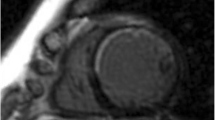Abstract
The impact of cardiac resynchronization therapy (CRT) on clinical outcome in patients with a continuous-flow left ventricular assist device (LVAD) is currently not well understood. We conducted a systematic literature review and meta-analysis with an intention to summarize all published clinical evidence. We searched MEDLINE and EMBASE databases through March 2018 for studies that compared the outcomes in patients with LVAD and CRT. Pooled odds ratios (OR) and 95% confidence intervals (CI) were calculated using a random-effects model, inverse variance method. The between-study heterogeneity was assessed using the Q statistic and I2. A total of seven studies that included 1157 (575 CRT; 582 non-CRT) patients were identified. Our meta-analysis did not demonstrate a significant difference in the risk of mortality (pooled OR = 1.21, 95% CI 0.90–1.63, P = 0.21), ventricular arrhythmia incidence (pooled OR = 1.36, 95% CI 0.99–1.86, P = 0.06), hospitalization (pooled OR = 1.36, 95% CI 0.59–3.14, P = 0.48), or implantable cardioverter defibrillator therapies (pooled OR = 1.08, 95% CI 0.51–2.30, P = 0.84) among the CRT group compared with the non-CRT group. There was high heterogeneity with an I2 of 75% for ICD therapies. Among LVAD patients, CRT combined did not significantly affect mortality, re-hospitalization, ventricular arrhythmia incidence, and ICD therapies.









Similar content being viewed by others
References
Savarese G, Lund LH (2017) Global public health burden of heart failure. Card Fail Rev 3(1):7–11
Cazeau S, Leclercq C, Lavergne T, Walker S, Varma C, Linde C, Garrigue S, Kappenberger L, Haywood GA, Santini M, Bailleul C, Mabo P, Lazarus A, Ritter P, Levy T, McKenna W, Daubert JC (2001) Effects of multisite biventricular pacing in patients with heart failure and intraventricular conduction delay. N Engl J Med 344(12):873–880
Abraham WT, Fisher WG, Smith AL, Delurgio DB, Leon AR, Loh E, Kocovic DZ, Packer M, Clavell AL, Hayes DL, Ellestad M, Trupp RJ, Underwood J, Pickering F, Truex C, McAtee P, Messenger J, MIRACLE Study Group. Multicenter InSync Randomized Clinical Evaluation (2002) Cardiac resynchronization in chronic heart failure. N Engl J Med 346(24):1845–1853
Bristow MR, Saxon LA, Boehmer J, Krueger S, Kass DA, de Marco T, Carson P, DiCarlo L, DeMets D, White BG, DeVries D, Feldman AM, Comparison of Medical Therapy, Pacing, and Defibrillation in Heart Failure (COMPANION) Investigators (2004) Cardiac-resynchronization therapy with or without an implantable defibrillator in advanced chronic heart failure. N Engl J Med 350(21):2140–2150
Cleland JG, Daubert JC, Erdmann E, Freemantle N, Gras D, Kappenberger L, Tavazzi L, Cardiac Resynchronization-Heart Failure (CARE-HF) Study Investigators (2005) The effect of cardiac resynchronization on morbidity and mortality in heart failure. N Engl J Med 352(15):1539–1549
MacIver J, Ross HJ (2012) Quality of life and left ventricular assist device support. Circulation 126(7):866–874
Gopinathannair R, Roukoz H, Bhan A et al (2017) Cardiac resynchronization therapy versus ICD on clinical outcomes in continuous flow LVAD recipients: a multicenter analysis. Heart Rhythm 14(5):S84
Stang A (2010) Critical evaluation of the Newcastle-Ottawa scale for the assessment of the quality of nonrandomized studies in meta-analyses. Eur J Epidemiol 25(9):603–605
Higgins JP, Thompson SG, Deeks JJ, Altman DG (2003) Measuring inconsistency in meta-analyses. BMJ 327(7414):557–560
Richardson TD, Hale L, Arteaga C, Xu M, Keebler M, Schlendorf K, Danter M, Shah A, Lindenfeld JA, Ellis CR (2018) Prospective randomized evaluation of implantable cardioverter- defibrillator programming in patients with a left ventricular assist device. J Am Heart Assoc 7(5)
Kutyifa V, Fernandez G, Sherazi S et al (2016) Lack of association between cardiac resynchronization therapy and improved survival in left ventricular assist device patients. Heart Rhythm 13(5):S531
Mai TV, Minnier J, Mudd JO et al (2016) Arrhythmic effects of cardiac resynchronization therapy versus implantable cardiac defibrillator in patients with a left ventricular assist device. Heart Rhythm 13(5):S185
Choi AD, Fischer A, Anyanwu A, Pinney S, Adler E (2010) Biventricular pacing in patients with left ventricular assist devices - is left ventricular pacing proarrhythmic. J Am Coll Cardiol 55(10):A22.E208
Rao P (2015) Cardiac resynchronization therapy in left ventricular assist device patients. Heart Rhythm 12(5):S218
Hottigoudar RU, Birks EJ, Trivedi J et al (2013) Cardiac resynchronization therapy does not offer additive benefit over ICD in patients with continuous flow left ventricular assist device. Heart Rhythm 10(5):S112
Koplan BA, Kaplan AJ, Weiner S, Jones PW, Seth M, Christman SA (2009) Heart failure decompensation and all-cause mortality in relation to percent biventricular pacing in patients with heart failure: is a goal of 100% biventricular pacing necessary? J Am Coll Cardiol 53(4):355–360
Hayes DL, Boehmer JP, Day JD, Gilliam FR III, Heidenreich PA, Seth M, Jones PW, Saxon LA (2011) Cardiac resynchronization therapy and the relationship of percent biventricular pacing to symptoms and survival. Heart Rhythm 8(9):1469–1475
Ruwald AC, Kutyifa V, Ruwald MH, Solomon S, Daubert JP, Jons C, Brenyo A, McNitt S, Do D, Tanabe K, al-Ahmad A, Wang P, Moss AJ, Zareba W (2015) The association between biventricular pacing and cardiac resynchronization therapy-defibrillator efficacy when compared with implantable cardioverter defibrillator on outcomes and reverse remodelling. Eur Heart J 36(7):440–448
Author information
Authors and Affiliations
Corresponding author
Electronic supplementary material
ESM 1
(PDF 37 kb)
Rights and permissions
About this article
Cite this article
Voruganti, D.C., Briasoulis, A., Chaudhry, M. et al. Cardiac resynchronization therapy and outcomes in patients with left ventricular assist devices: a systematic review and meta-analysis. Heart Fail Rev 24, 229–236 (2019). https://doi.org/10.1007/s10741-018-9740-x
Published:
Issue Date:
DOI: https://doi.org/10.1007/s10741-018-9740-x




